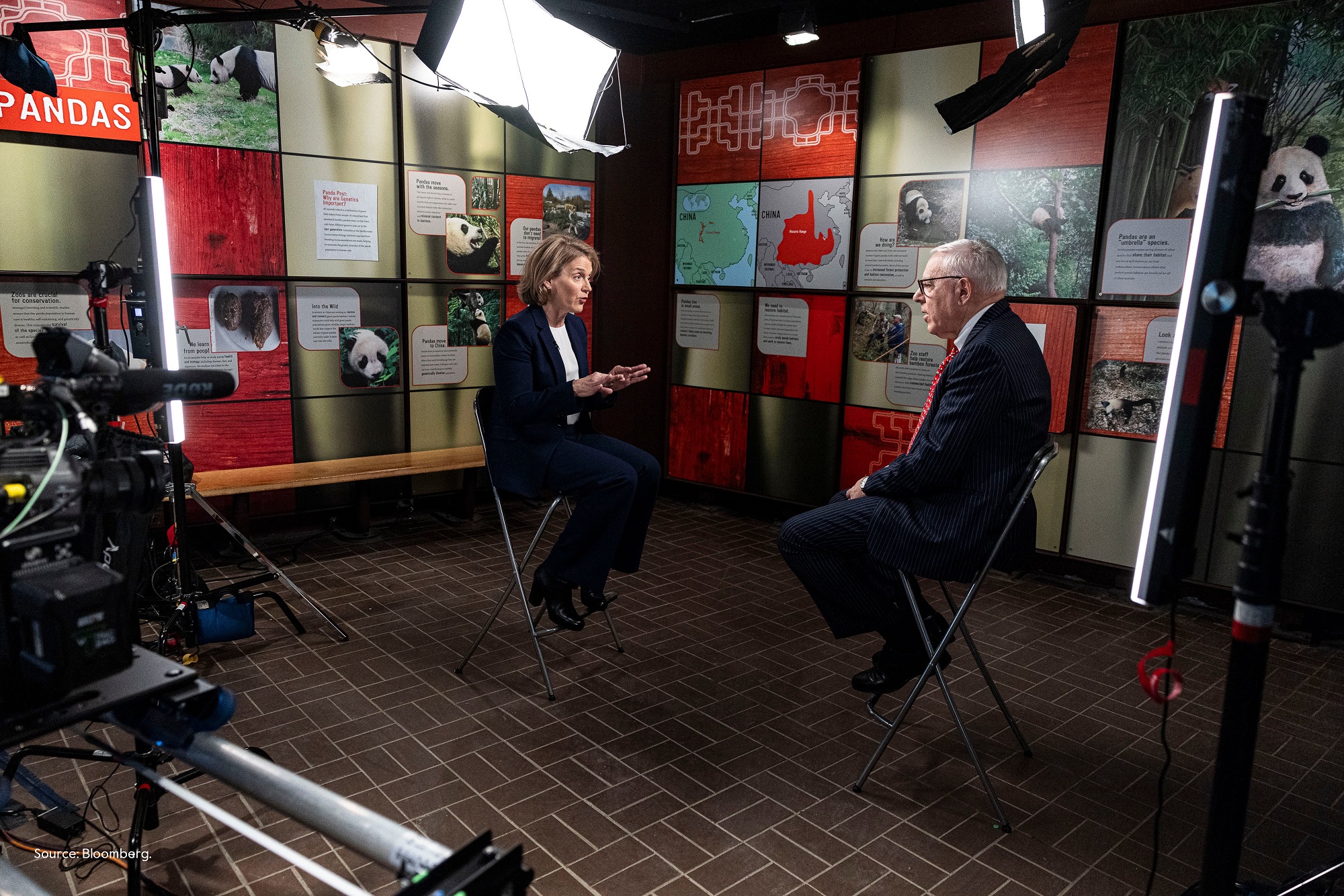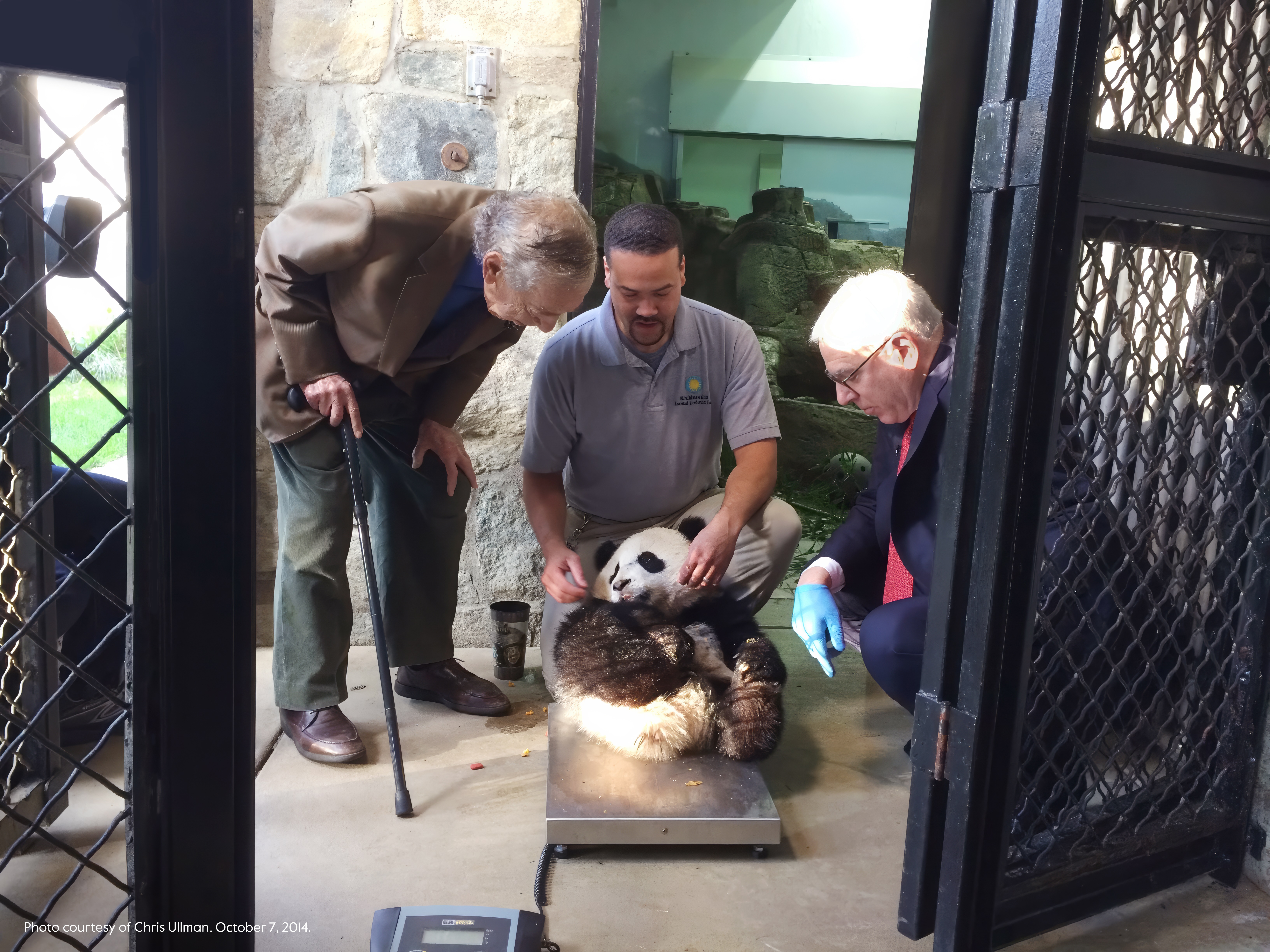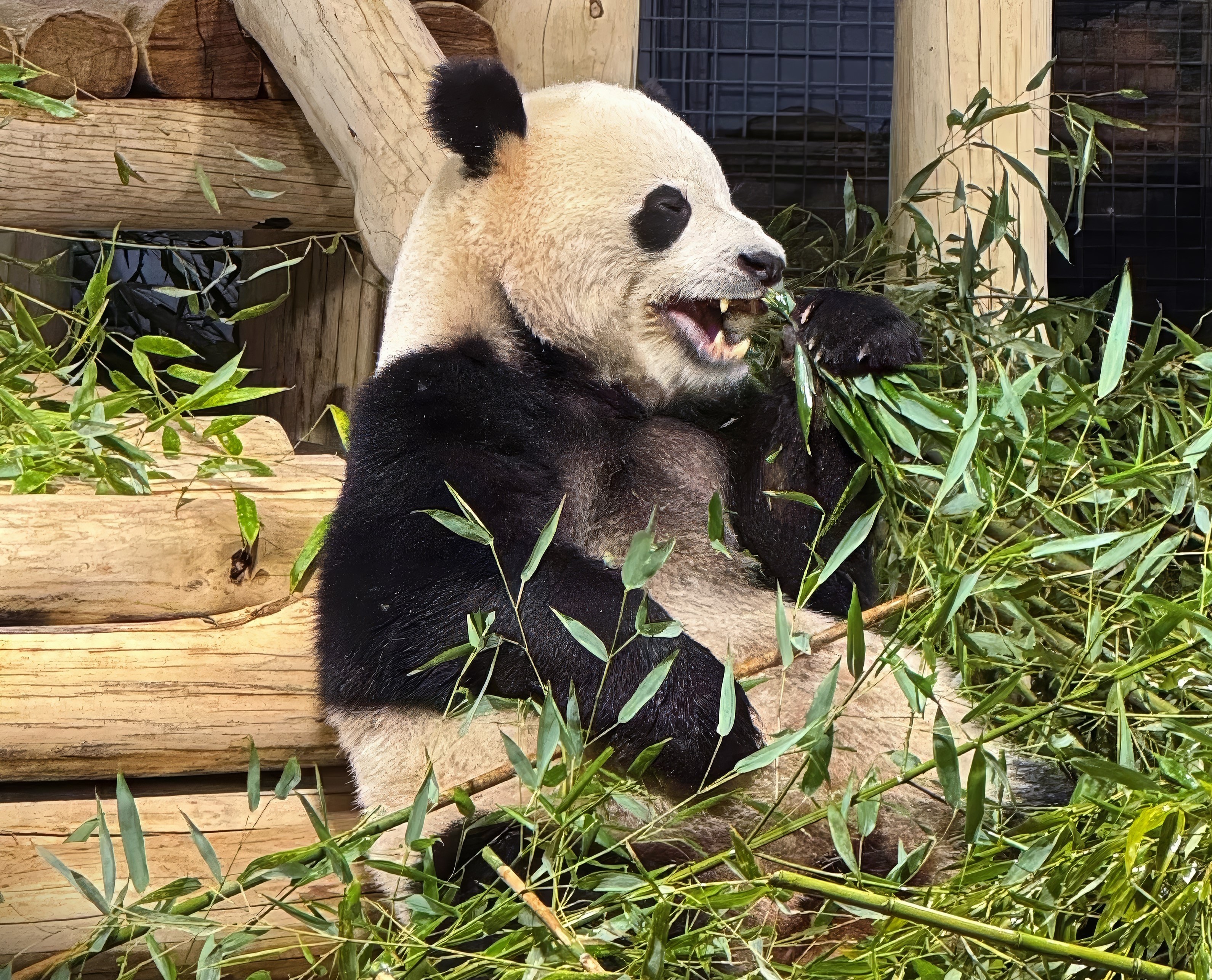Panda-monium In Washington

Introducing From David’s Desk, a newsletter penned by Alfa Co-Founder and Co-Chairman David M. Rubenstein and other leaders across our firm. Each edition provides insights on public policy, geopolitics, and other topics in and around Washington, DC. Discover past editions on the series' webpage.
Washington has been very excited recently to have a new presence in town. President Trump was inaugurated, but for some the big excitement has been the two new pandas fresh from China, Bao Li and Qing Bao, making their public debuts.
Why the excitement?
There have been no pandas in the National Zoo, owned and operated by the Smithsonian Institution, for about a year, and the absence of pandas has put many in Washington into a funk. Politics, laws, and regulations are no doubt the lifeblood of Washington, but the soul of the city seems to be the pandas.
Why are two animals, which you cannot pet, feed, or talk to (with the hope that they will generally get the idea of what you are saying), so popular in Washington—to the point that their 12-hour a day movements are followed by thousands of people through a panda camera, visible from anywhere in Washington or the world? Let me try to explain.
The Chinese have engaged in what has been called “panda diplomacy” since at least 1941, when Madame Chiang, the wife of Chiang Kai-shek, the former president of the Republic of China, arranged to have two pandas sent to the Bronx Zoo. (They arrived in late December of that year but did not get much attention as the country’s focus was on Pearl Harbor and the entrance into World War II.)
When Mao Zedong gained control of the Chinese government in 1949, his government continued the practice of panda diplomacy by providing nine different countries with 24 pandas from 1957-1983.
The best known of these occurred in 1972, when President Richard Nixon made his historic trip to China. Then-Premier Zhou Enlai gifted two giant pandas, Ling Ling and Hsing Hsing, to the United States after Mrs. Nixon admired the animals at the Beijing Zoo. (Nixon reciprocated by giving China two musk oxen.)

The two pandas were given to the National Zoo and lived there for more than twenty years before passing away. No new pandas were then provided by the Chinese government.
But the Chinese government in time decided to have a more systematic way of providing pandas to zoos around the world. In 1984, Deng Xiaoping decided to provide pandas on a lease basis. In time, this evolved into a program under which two pandas were leased for $1 million dollars per year, and the pandas, and any offspring, would have to be returned to China in the future. (Under US law, for a zoo to receive the animals, the fees paid to China for the pandas must go toward panda conservation, so it is not a money-making exercise.)
The National Zoo, under this program, started receiving pandas in 2000 and had a total of 10 different pandas until the last pandas left in 2023.
At one point, there were 25 zoos outside of China which participated in the program. Four of these zoos were in the US—in addition to Washington, pandas were at zoos in San Diego, Memphis, and Atlanta. Other than Atlanta (whose pandas returned to China in late-2024), all other pandas were returned or had passed away by 2023. (Those returned went as originally scheduled but without any new pandas being sent.)
Perhaps because the US-China governmental relationship was not strong in the 2021-2023 period, the Chinese government did not renew the program with some of the American zoos. As a result, the pandas in San Diego, Memphis, and Washington were returned to China during this period.
When pandas were returned, new pandas were typically provided. The new pandas were generally two-to-threeyears old and included a male and a female who were not genetically related. It was hoped that the pandas would in time reproduce, and that did occur at a number of zoos, through natural or artificial means, and the baby pandas were also owned by the Chinese and would have to be returned at a later date as well.

When pandas provided to the National Zoo and their offspring were returned to China in 2023, no new pandas were provided, as the Chinese did not want to begin negotiating on the next set of pandas until after the previous bears had been returned.
However, a new agreement was achieved in 2024, and two new pandas would be provided in late 2024. The new pandas that arrived at the zoo in October, were subject to a three-month quarantine and acclimation period, and were made available for public view late last month.
The director of the National Zoo, Dr. Brandie Smith, spent almost a year working with the Chinese to negotiate a return of two new pandas, and that agreement was reached last spring. She and her colleagues worked with the China Wildlife Conservation Association to help select the pandas who would actually be sent.
Dr. Smith is a trained conservation biologist who had overseen the mammals at the National Zoo (including the pandas) for several years before being appointed zoo director in 2021.
I was not someone obsessed with pandas, or frankly all that interested in them, until 2015. I was then a regent of the Smithsonian Institution (and later became Chair of the Board of Regents) and at a board meeting, Dennis Kelly, Director of the National Zoo at that time, reported that the automobile company which had been providing the zoo with funds to pay the Chinese for the past decade would not be renewing its contract.
Given this concern about future funding required under the agreement with the Chinese, I volunteered to provide the funding and have been the principal supporter since. I recently renewed my support for another five years when the prospect of pandas returning became a possibility.
As a result of this support, I was able to meet the previous pandas and, recently, the new pandas (I was filming an interview of Dr. Smith for my Bloomberg television show). Neither the previous nor new pandas seemed overly appreciative or fond of me—maybe they really wanted to stay in China (or maybe they are just shy in expressing emotions). But these new pandas do seem happy in Washington, especially when they had a chance to roll around in some fresh snow that descended on the city.

Why do the Chinese control the supply of pandas? Pandas are native only to China, and the Chinese are thus the only country which can supply them. And since zoos that get pandas have to agree to return them, they won’t end up anywhere else.
Does China have a great number of pandas? Not really. Pandas live in the wild in central China, and many areas of their natural habitat have been developed over time, reducing the size of their territory. In the wild there are now only about 1,900 pandas. There are about 750 pandas in captivity, the vast majority of which are in China, with many in the Research Base of Giant Panda Breeding in Chengdu.
Stated differently, there are only about 2,700 pandas in the world. That is a larger number than in the 1980s when pandas were deemed an endangered species. To put that into context, there are roughly 900,000 black bears in North America. Today, giant pandas are considered vulnerable.
Why are there so few pandas, aside from the fact that they live naturally only in China and the land of their natural habitat was shrinking? (Panda habitat in China has been re-growing in the past few years and China now has a Giant Panda National Park that is roughly three times the size of Yellowstone.)
The answer is that the pandas have a very unusual reproduction process. The female is fertile, and able to conceive, for only about one day during any given year. That obviously complicates reproduction.
In the wild, a female panda will signal a few weeks in advance that she should be fertile in the near future by leaving scents on trees. The male pandas will typically pick up those scents and leave their own, saying they got the message. This can continue for several weeks until a female and male panda meet during this very short period.
Another problem is that when a birth does occur, the baby panda is very small (about the size of a stick of butter, blind at birth, and completely dependent on the mother for several months). It is not uncommon that a pregnant panda will deliver two babies, but the mother typically will choose to care for only one, leaving the other baby to die quickly.
But giant panda baby rearing has challenges as well. The baby panda is one of the smallest babies in proportion to the size of their mothers in the mammal world. And thus, it requires a lot of maternal investment to survive.

In short, getting new pandas born and raised is not easy in the wild. In captivity, many similar problems occur, though those who oversee the pandas have the ability to monitor when the female is most likely to be fertile and can place the female in an area with a male at the right time.
But nature does not always take its course. If no mating seems to be occurring, the zookeepers will anesthetize the female and artificially inseminate her, but for a variety of reasons that does not always produce a pregnancy.
Because of my support for the pandas, I was previously asked if I wanted to see the artificial insemination process that was expected to occur when the National Zoo’s pandas were placed together in 2020. I declined. I was then asked if I wanted to see the male panda being extracted as part of that process. I said I absolutely did not want to see that.